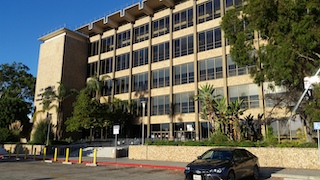The introduction to Senate Bill SB 567 is helpful to understanding, not only this particular bill, but criminal sentencing in general. It explains that under existing law in California, a crime is categorized as an infraction, misdemeanor or felony.
Brief Synopsis: Senate Bill (SB) 567 amends Penal Code §§ 1170(b) and (c) to require that the judge impose the middle terms in sentencing unless there are specific aggravating factors stipulated to by defendant or found true beyond a reasonable doubt by a jury or the judge. The judge also must impose the lower term if certain conditions exist, i.e., youthful trauma, violence or trafficking.
When a defendant is sentenced to state prison on a felony (probation is not granted), the sentence is for one of three terms, i.e., sixteen months, two years or three years, although other crimes have three terms that can be more. The three terms possible are often called the sentencing “triad” for the case. The sentence is then either served in state prison or, under AB 109 (Penal Code § 1170(h)) county jail for certain crimes.
When a defendant is sentenced to state prison, the judge has full discretion to choose the lower, middle or upper term of punishment, depending upon the facts of the case (i.e., injuries or loss, defendant’s cooperation with police or lack thereof, the victim’s wishes for punishment, the legal issues and their complexity), the defendant’s criminal history and other factors. Penal Code § 1170(a)(3).
Previously, before recent changes in the law, the judge was required to impose the middle term as a statutory default term unless he or she could identify specific mitigating factors that supported the lower term or specific aggravating factors that supported imposition of the upper term.
 Torrance Courthouse
Torrance Courthouse
With many felonies, a sentencing enhancement may also apply. Many enhancements likewise have a lower, middle and upper term. Judges now have full discretion to impose the lower, middle or upper term, depending upon the facts of the case, defendant’s criminal history and other factors.
In our experience, this system has generally worked well, however, we have seen in many cases that when a defendant exercises his right to trial and is found guilty, judges often impose the upper term of imprisonment, which seems to punish defendant more for exercising this constitutional right than if the defendant had accepted a pre-trial plea bargain. Many attorneys call this extra punishment a “trial tax.”
Perhaps in response to such judges’ sentencing, Senate Bill 567 amends Penal Code section 1170 to give judges no discretion to impose a prison sentence exceeding the middle term unless circumstances in aggravation were stipulated to by the defendant or found true beyond a reasonable doubt by the fact-finder. Pen. Code, § 1170, subds. (b)-(c).
Senate Bill 567 also provides further that upon request of the defendant, trial on aggravating circumstances must be bifurcated, with some exceptions. Id. at subd. (b)(2).
In addition, SB 567 allows the judge to consider prior convictions from a certified record of conviction without submitting the prior convictions to a jury. Id. at subd. (b)(3). The judge may also consider the probation officer’s report, statements in aggravation submitted by the prosecution, other reports received under Penal Code § 1203.03 (diagnostic evaluations of defendant), a victim impact statement and defendant may submit a brief concerning the mitigating circumstances to be considered at sentencing. Id. at subd. (b)(4). Such a victim impact statement and mitigation brief are required to be submitted at least four days prior to imposition of judgment. Id.
Now, under SB 567, the judge’s reasons for imposing the selected term must be stated in the record. Id. at subd. (b)(5).
In addition, under SB 567, a judge must impose the lower term if trauma, youth, violence or trafficking victimization, as specified, was a contributory factor to commission of the offense, unless the court finds aggravating circumstances outweigh mitigating and imposition of the lower term would be contrary to the interests of justice. Id. at subd. (b)(6).
With passage of AB 567, former Penal Code § 1170, subdivision (d), is stricken and recodified as section 1170.03.
We consider this new law a much needed revision to the sentencing laws, as we have had several clients sentenced to the upper term after a jury trial, we believe simply because the judge was angry that he had to conduct a trial and endure all the extra work and stress it imposed on him. Judges should not retaliate against a defendant for exercising his or her right to trial and this new law seeks to prevent that.
For more information about sentencing issues generally, please click on the following articles:
 Torrance Courthouse
Torrance Courthouse